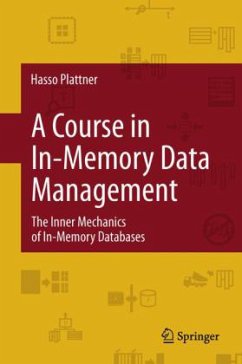Latest achievements in hard and software development enabled the introduction of a revolutionary technology to support flexible and extremely fast analysis of massive amounts of enterprise data: in-memory data management. Professor Hasso Plattner and his research team at the Enterprise Platform and Integration Concepts group at HPI-Potsdam have been teaching trends and concepts in the software industry for years.
This book is based on the first free publicly available online course at the openHPI online e-learning platform, which was launched in autumn 2012 with great success. This book and its underlying course are designed for students of computer science, software engineering, and IT related subjects. However, it addresses business experts, decision makers, software developers, technology experts, and IT analysts as well. They focus on exploring the inner mechanics of a column-oriented dictionary-encoded in-memory database. Beyond that, its implications for future enterprise applications and their development are discussed. Readers are lead to understand the radical differences and advantages to traditional row-oriented disk-based databases for OLAP and OLTP that result in a spectacular outperformance of the new in-memory technology.
This book is based on the first free publicly available online course at the openHPI online e-learning platform, which was launched in autumn 2012 with great success. This book and its underlying course are designed for students of computer science, software engineering, and IT related subjects. However, it addresses business experts, decision makers, software developers, technology experts, and IT analysts as well. They focus on exploring the inner mechanics of a column-oriented dictionary-encoded in-memory database. Beyond that, its implications for future enterprise applications and their development are discussed. Readers are lead to understand the radical differences and advantages to traditional row-oriented disk-based databases for OLAP and OLTP that result in a spectacular outperformance of the new in-memory technology.
From the reviews:
I would recommend it primarily to database practitioners and database implementers seeking to better understand the physical layer of in-memory database systems. The material will be of interest to database developers interested in physical-layer implementation. It may also be of some interest to application developers working with in-memory databases, particularly SanssouciDB. (S. Thomas, Computing Reviews, September, 2013)
I would recommend it primarily to database practitioners and database implementers seeking to better understand the physical layer of in-memory database systems. The material will be of interest to database developers interested in physical-layer implementation. It may also be of some interest to application developers working with in-memory databases, particularly SanssouciDB. (S. Thomas, Computing Reviews, September, 2013)

